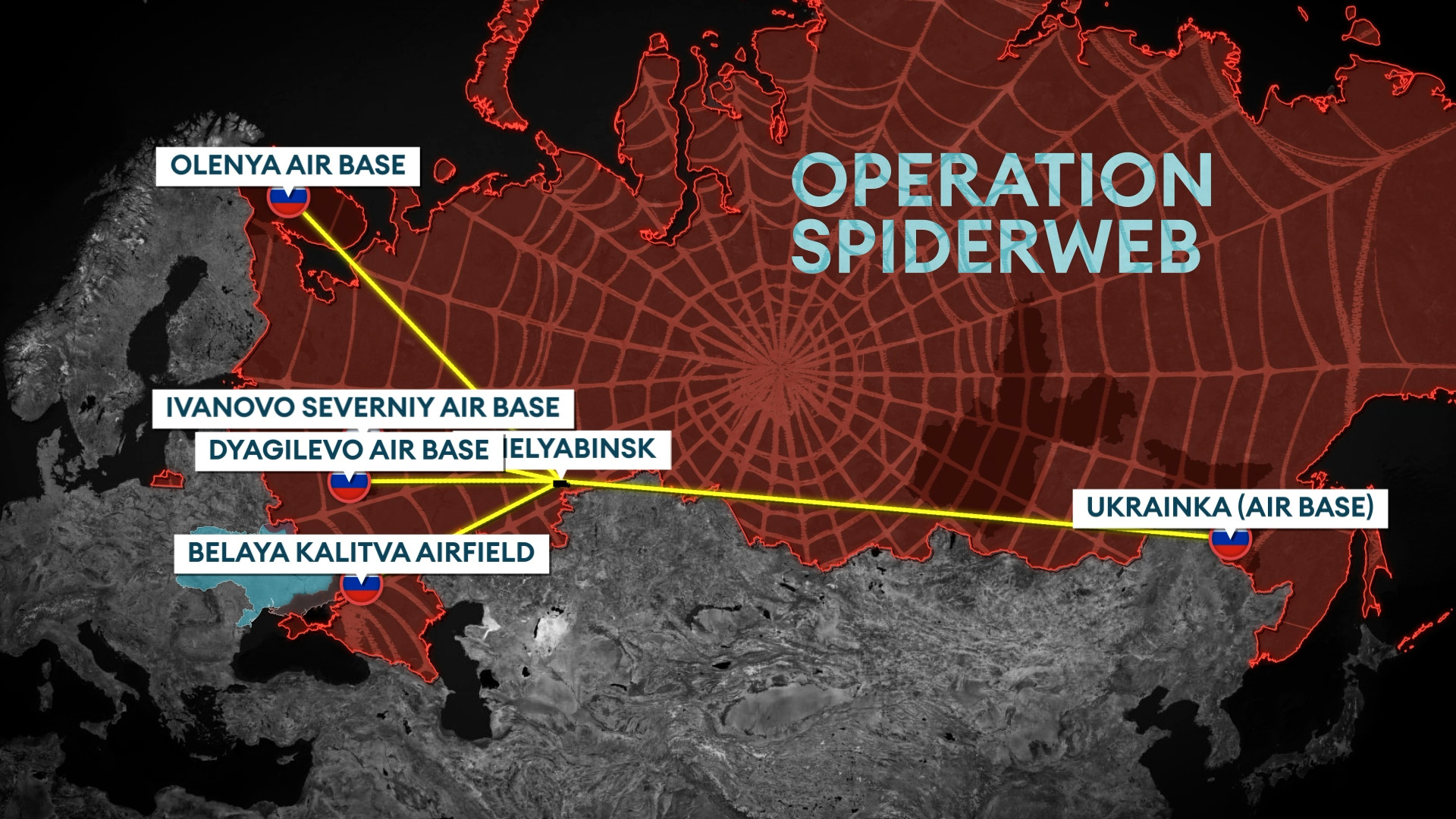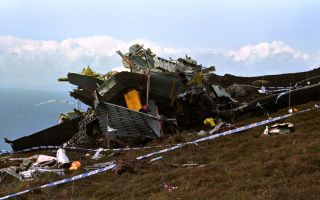Caught in the web: How Operation Spiderweb cost the Russian air force dearly
Ukraine's Operation Spiderweb may not only have pulled off the biggest blow to Russian air power to date, but also left it part-blind.
Drone footage clearly shows two Russian Beriev A-50 airborne early warning aircraft, or Awacs, becoming a bonus target during the clever drone attack.
But open source intelligence analysts have urged caution, as the A-50s seen in the video may have been retired rather than operational aircraft.
The degree of damage or destruction of these aircraft hasn't been confirmed.
But if two of a dwindling number of operational examples – nine at the last count last year and now possibly as low as two – have been taken out of action, then it's significant.
The A-50 is a key over-the-horizon detection and tracking tool used to coordinate and direct missile attacks against Ukraine.
So if the loss of these aircraft is verified, the daring operation involving wooden sheds, lorries and drones can add another major victory to Ukraine's list.

How Ukraine wove Op Spiderweb
The remarkable Op Spiderweb had 117 drones emerging from lorries at several locations close to Russian air bases deep inside Vladimir Putin's country.
The operation culminated in a coordinated direct attack across multiple time zones and multiple air bases, targeting 41 "untouchable" heavy bombers.
The price of the devastating operation is stark.
Kyiv used remotely piloted armed quadcopters, which cost peanuts.
The cost of the attack on Moscow is estimated to be £5bn, according to the Security Service of Ukraine.
Ukraine outwitted Russia's defences by the simplest means, concealing attack drones and delivering them to their targets like the famous Trojan horse, but in specially adapted wooden cabins with remotely operated detachable roofs.
The operation was a year-and-a-half in the making and sounds disarmingly simple.
How the attack was launched from inside Russia
Once the component parts were smuggled into Russia, it is believed that they were prepared in a warehouse located in the city of Chelyabinsk, according to Russian military bloggers, who have studied the images.
From there, Russian lorry drivers unwittingly delivered what they believed to be wooden cabins or sheds across Russia as far north as Murmansk and as far as 8,000km from Ukraine to the Amur region in the east.
An unknown contact then called each of them with instructions on where to stop, all right next to air bases thought too far away to be under threat from Ukraine.
The shed's roofs were remotely lifted, and the drones flew towards their targets.
It is claimed that of the 41 strategic bombers hit, 13 were destroyed.
The aircraft targeted included the Tupolev Tu-95, Tupolev Tu-22 and Tu-160, Russia's newest strategic bomber, as well as the aforementioned A-50.
The fallout from this attack is still being felt, with paranoia now sweeping across Russia as every lorry laden with cargo becomes a potential threat, snarling up logistics and road systems with security checks for more hidden weaponry.







